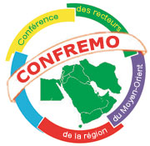Unité sémiotique de la qaṣīda à répons chez Yūsuf al-Manyalāwī
Résumé
Semiotic Unity of Responsorial Qaṣīda in Yūsuf al-Manyalāwī Recordings This paper proposes a semiotic study of the modality of the qaṣīda muwaqqa'a 'alā al-waḥda, an important Arab vocal form which appeared in the late 19th c. in Egypt, and perpetuated thanks to the 78rpm recorded by Sheikh Yūsuf al-Manyalāwī (c. 1847-1911). This hybrid form alternates the verses' improvised cantillation (on a binary measure) with the polysemic (mystic vs. secular) Response of the Censors. Beyond its interface (prelude/instrumental interlude/postlude) function, this response is a model for the musicalization of a qaṣīda. This hypothesis assigns to the melodic articulation mode of the response --and particularly of its cadential scheme-- the role of (1) unitary referential to identify the relevant features of the cantillation formulas and (2) unifying reference modal point for the intrinsic significance of this qaṣīda musical utterance.
Cet article propose une étude sémiotique de la modalité de la qaṣīda muwaqqa'a 'alā al-waḥda, importante forme vocale arabe apparue à la fin du XIXe s. en Égypte, et pérennisée notamment grâce aux 78 tours enregistrés par le cheikh Yūsuf al-Manyalāwī (vers 1847-1911). Cette forme hybride fait alterner la cantillation improvisée (et métriquement mesurée binaire) des vers avec un répons au texte polysémique (mystique vs profane), dit des censeurs. Par-delà sa fonction d'interface (prélude/interlude instrumental/postlude), celui-ci constitue un modèle saillant pour la musicalisation d'une qaṣīda. Cette hypothèse assigne au mode d'articulation mélodique de ce répons et à son schème cadentiel le rôle de référentiel unitaire pour la distinction des traits pertinents des formules cantillatoires et de repère modal unifiant pour la significativité intrinsèque de l'énonciation musicale de la qaṣīda.
| Origine | Accord explicite pour ce dépôt |
|---|
Loading...
